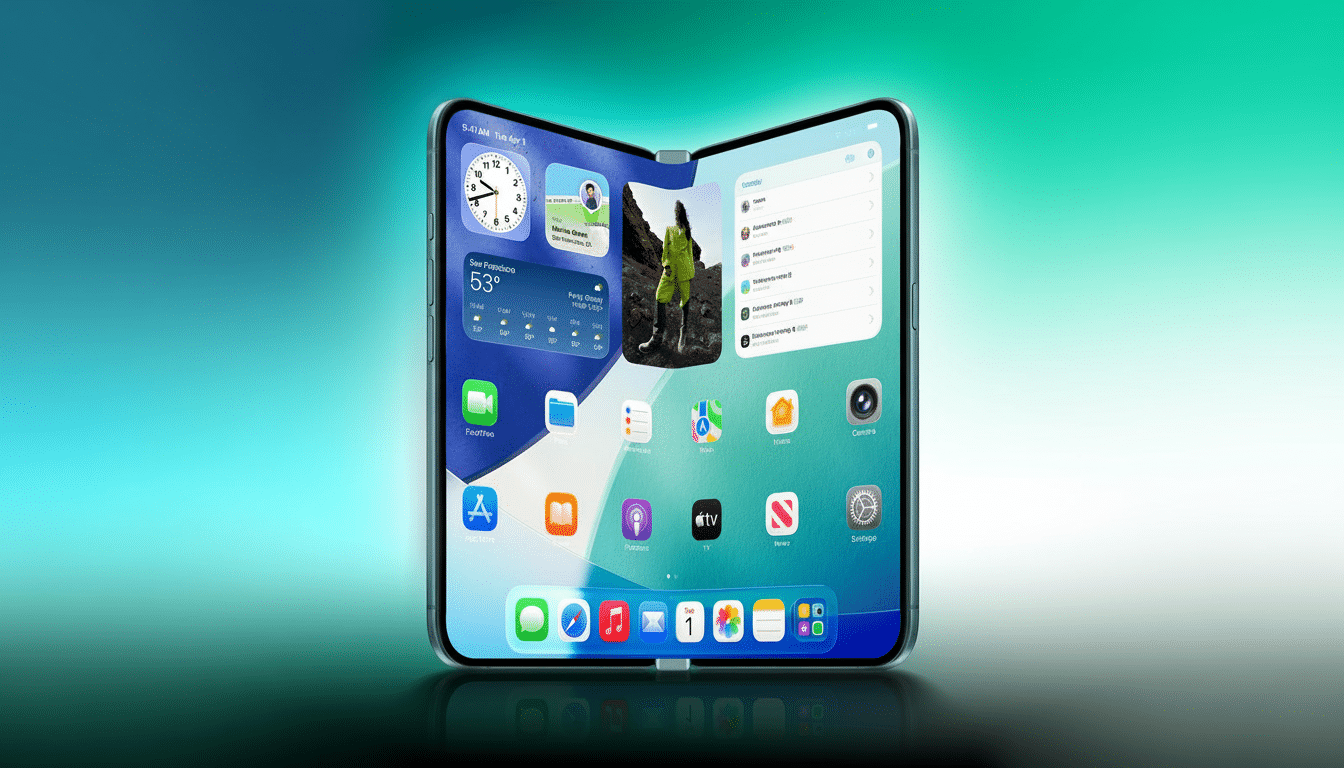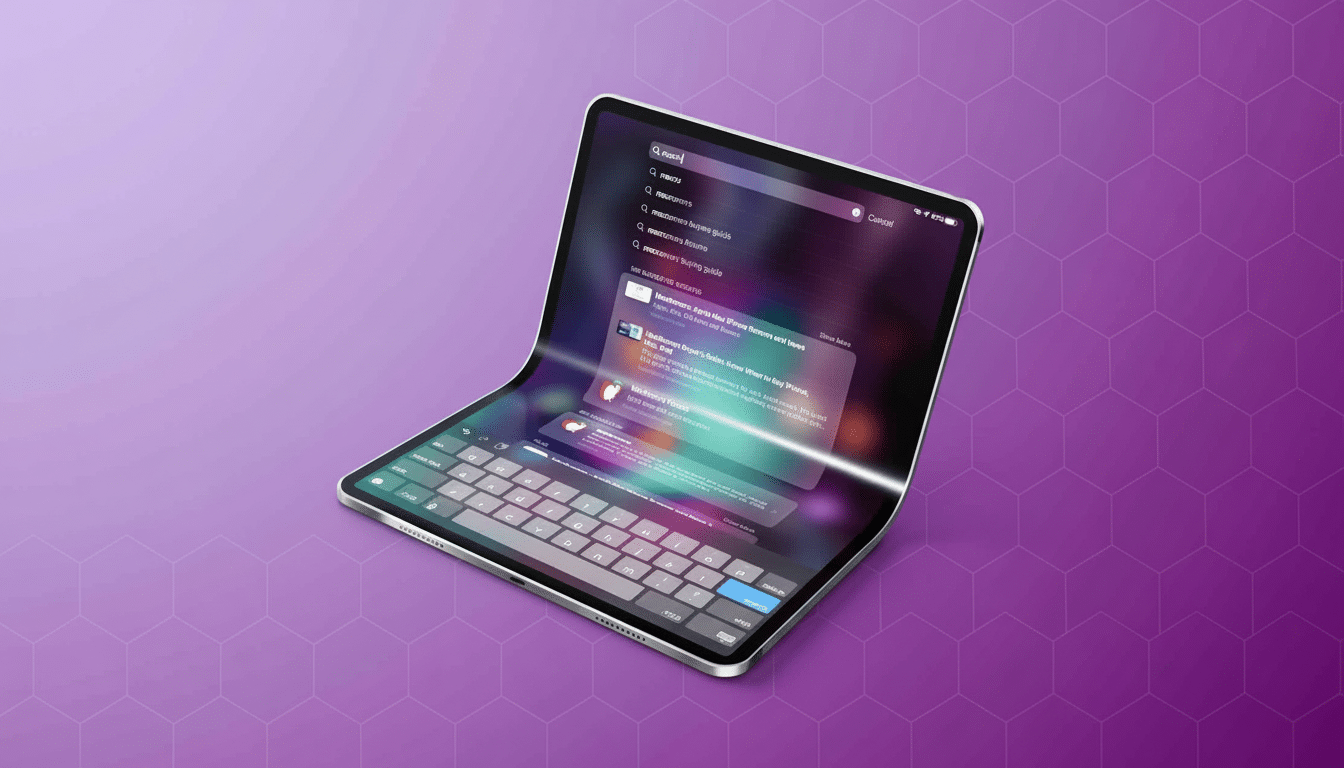There’s a problem with Apple’s long-rumored folding iPad, according to a comprehensive report from Bloomberg’s Mark Gurman, and it’s more than just something that can be fixed with some last-minute tweaks. Prototypes based on a huge, foldable 18-inch screen were said to be too heavy, too expensive, and too compromised for Apple to use anytime soon.
The outlook is moving the product back at least four years, with internal expectations being pushed further ahead than previously. For a category that changes fast, even that delay threatens to lose out on both mindshare and technical momentum as competitors continue to tinker with large-format foldables.

Why the Foldable iPad Is Delayed by Design Challenges
Engineering a tablet that unfolds to close to 18 inches is an order of magnitude more difficult than creating a folding phone. The hinge has to cover a much bigger seam, the display stack requires more reinforcement, and tolerances for panel warping, glare, and crease visibility change in dramatic ways as the canvas grows.
According to Gurman, Apple has collaborated with Samsung Display on panels that would limit the telltale fold line. That, in turn, usually entails a gentler degree of fold, more complex mechanics for the hinge, and ultrathin glass that can marry flexibility with durability — each stage adding cost, mass, or both.
Weight and price are the red flags for Apple’s foldable iPad
The prototypes are said to weigh around 3.5 pounds. To give you some context, the heaviest current iPad Pro models weigh around 1.5 pounds; a 14-inch MacBook Pro weighs about 3.4 pounds. And a tablet that weighs as much as a laptop but does not have an integrated keyboard takes away one of the iPad’s key benefits in portability.
Pricing is equally stark. The working estimate is said to be around $3,000, or upwards of 200% more than a 13-inch iPad Pro. Large-sized foldable OLED panels have low yields and high scrap rates, and the cost of materials is being pushed up. Toss in a multi-link hinge, a reinforced chassis, and a battery enough to power a giant screen — and before you know it, those profit margins are narrowing unless the sticker price gets stratospheric.
This is not theoretical. Industry data from companies like DSCC has consistently highlighted the fact that big foldable panels carry outsized cost penalties compared to similar-sized rigid OLEDs, especially if crease visibility and reflectivity targets are challenging.
Display technology and the crease problem on large tablets
Apple is said to be holding out for a “minimal crease” experience. That probably includes ultrathin glass with special hardcoats, localized thinning at the fold line, and hinge cams that spread stress over a larger region. It will also require fewer optical layers — including polarizers — to compensate for thickness and glare, requiring yet another look at the way luminance and color are evened out.
Such solutions existed, but were not well-developed around phone sizes. The crease on a tablet-class panel is still a frontier problem, to slim it down without impairing the lifespan and bringing an extra bulge. The same report also said that Apple’s smaller foldable smartphone project is not facing these bottlenecks, which are due to the gigantic scale.
Context, competitiveness and ground realities in markets
Inside Apple, the company has set its sights on the first foldable somewhere between a larger iPhone and a MacBook, according to one of the people familiar with the device who asked not to be identified discussing products still in development.

Internally, Apple is targeting nothing less than an 18-inch folding laptop with a first model possibly exceeding $3,000 — or half that price without certain features and specifications.
Huawei’s MateBook Fold features an 18-inch foldable PC-tablet hybrid sold exclusively in China for about $3,400 equivalent. That device is said to be about a pound lighter than Apple’s current prototype — still heavy, but closer to something that could actually be used. Other big foldables, including Asus’s 17-inch Zenbook Fold and Lenovo’s ThinkPad X1 Fold, also ended up in the 2.8 to 3.3-pound range — evidence that it is difficult to beat a laptop-class weight here.
And, in phones, where foldables are more advanced, the future is still niche. There are more than 15 million foldable smartphones in circulation worldwide, according to Counterpoint Research — a meager slice of the overall smartphone market. Translating that proposition to tablets — where purchasers are looking more for long battery life, toughness, and keyboard-ready ergonomics — is an even higher hill to climb.
Software is another pressure point. “It does seem like iPadOS would have to morph a great deal to make you want something so big and with such an egregious fold — smart windowing, Pencil responsiveness into the middle of the fold, accessories that would somehow be necessary for something this large. If the hardware feels compromised but the software doesn’t provide superpowers, it’s difficult to make out why anyone should pay that premium.”
What to watch next as Apple reassesses foldable iPad plans
Sources also say that Apple’s ambitions were first set for a time earlier than the current 2022 target, and now the foldable iPad could be even further away — maybe as far back as the end of the decade. Expect Apple and its suppliers to chase three innovations prior to greenlighting the product: a lighter hinge-and-frame (carbon fiber, magnesium alloys), higher-yield large foldable OLEDs, and a crease profile that holds up over tens of thousands of complex folds without any visible artifacts.
And it is possible the company re-evaluates which form factors — smaller diagonal, different aspect ratio, or maybe even a dual-panel solution — if the 18-inch path does not get it to weight and cost targets.
Meanwhile, Apple can keep iterating on traditional iPads — thin-and-lights and performance-per-watt improvements are still compelling, and can ship at scale.
The bottom line from the Bloomberg reporting is clear: The foldable iPad, as currently imagined, just isn’t a thing yet. Until the engineering math changes, Apple is not going to bring to market a halo product that feels heavier than a laptop and costs more than most Mac configurations, no matter how futuristic it looks when it’s opened up.

